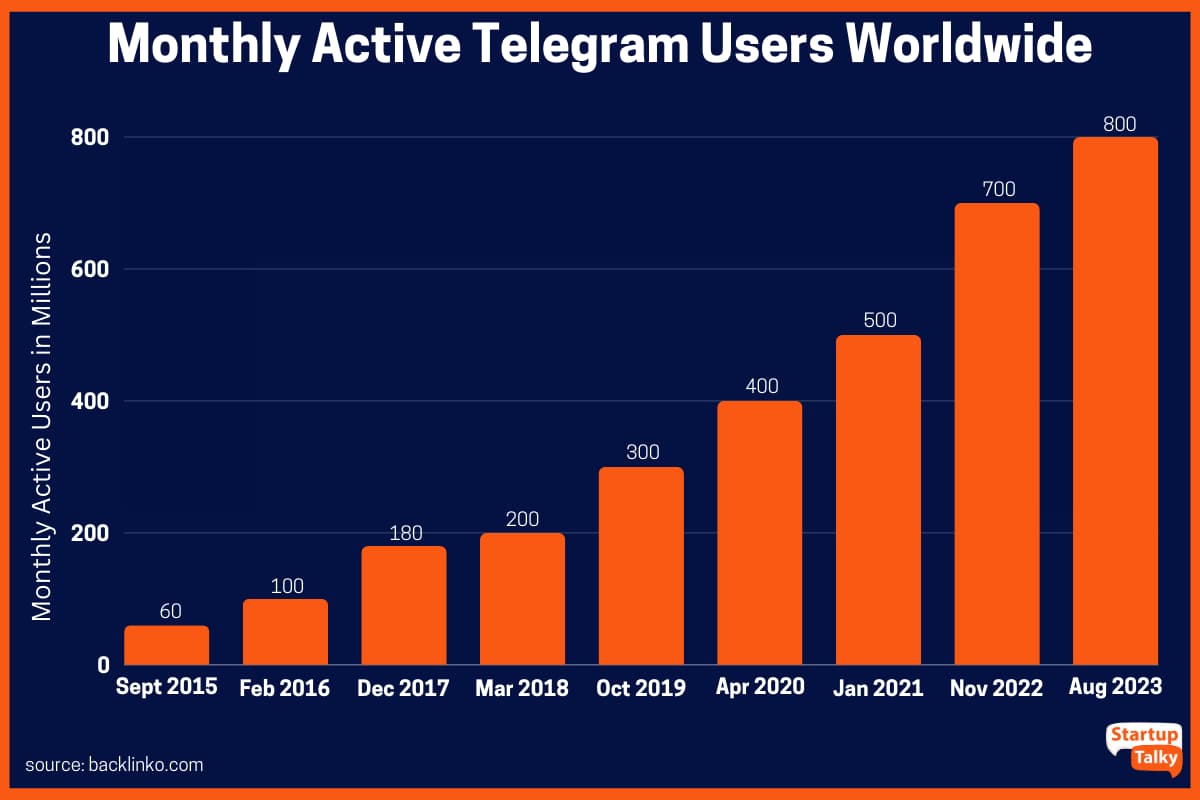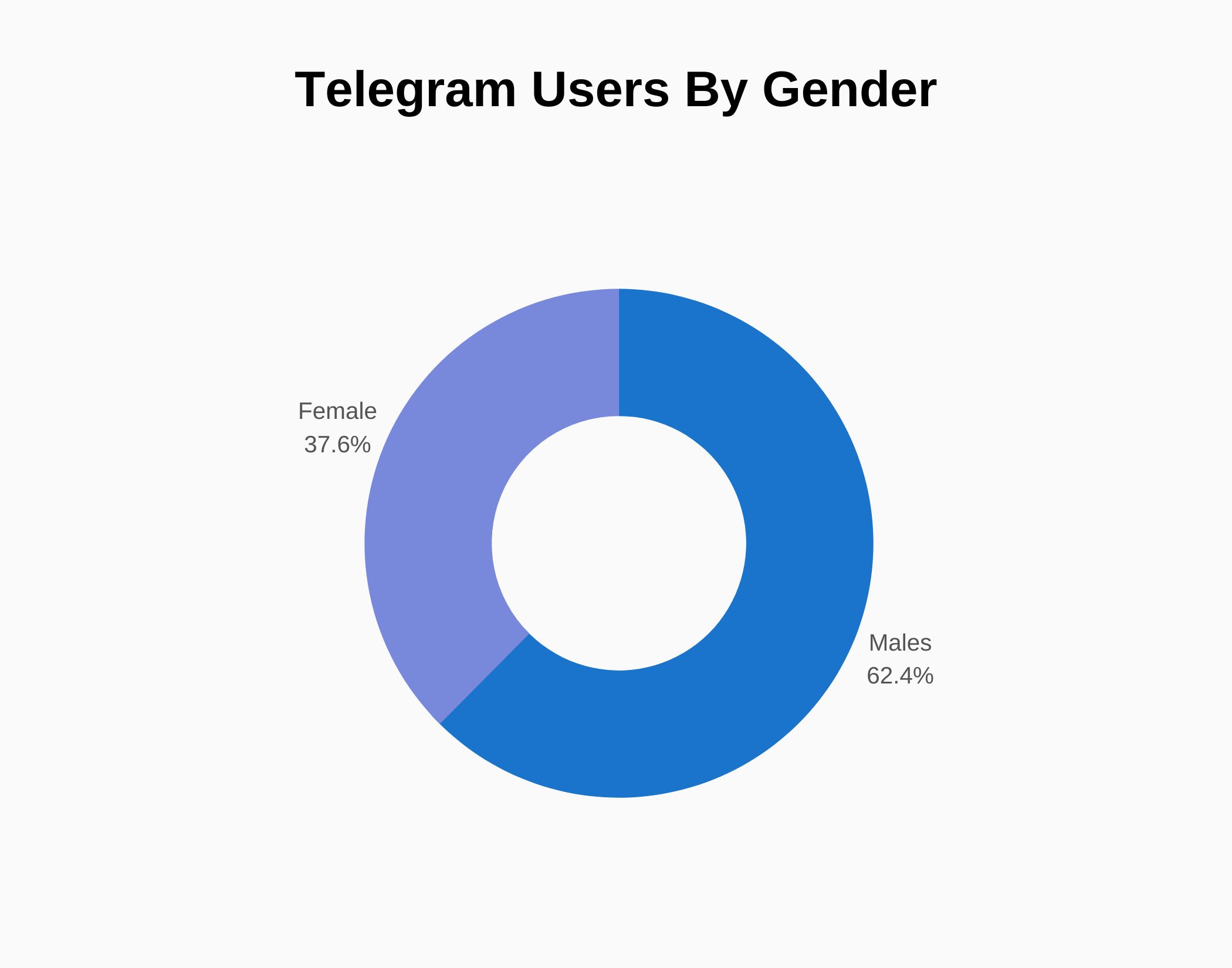Telegram has rapidly emerged as a powerhouse in the messaging app landscape since its launch in 2013. With over 700 million monthly active users, the platform is celebrated for its focus on security, privacy, and user-friendly features. Unlike many social media giants, Telegram operates with a unique ethos, valuing user freedom and privacy above all. Its growth can be attributed to the demand for messaging services that prioritize encrypted communication and offer expansive capabilities, such as channels, bots, and extensive file sharing.
So, what makes Telegram so popular? Here are a few factors:
- End-to-End Encryption: Telegram is famous for its Secret Chats that keep your conversations private.
- Bots and API Integration: Businesses and developers can create custom bots for a varied range of functions, enhancing user engagement.
- Channels: Users can subscribe to channels to receive updates or news without needing to engage in a traditional chat.
- Cross-Platform Functionality: Telegram works on various devices seamlessly, whether your choice is mobile or desktop.
As the demand for such features persists, understanding the business model that supports Telegram's operations becomes essential. In a world where many free services rely on ad revenue, Telegram has navigated a different path. Let's explore that unique approach in the next section.
Overview of Telegram's Business Model

Telegram's business model is anything but conventional in the tech world where advertising often reigns supreme. Instead of monetizing through targeted ads, Telegram relies on a model that emphasizes user-centric features and value. Founded by Pavel Durov, the platform has maintained a commitment to remaining ad-free, which is a significant distinction from competitors like WhatsApp or Facebook Messenger.
Here’s how Telegram generates revenue and sustains its operations:
- Premium Subscriptions: In June 2022, Telegram introduced its Premium subscription tier. This offers enhanced features such as faster download speeds, additional file storage capacity, and an ad-free experience in public channels. This model appeals to power users who require more from the platform.
- Donations and Philanthropy: Pavel Durov has been vocal about his intentions to keep Telegram free. He has financed the app’s development through personal funds and, at times, hefty investments from private investors. This approach of relying on donations and philanthropy encourages user loyalty and reinforces the idea of a community-driven platform.
- Business API: Telegram provides a robust API for businesses, allowing them to integrate custom bots and enhance customer interaction. While this could potentially lead to a revenue stream, it serves primarily to create value for users and brands.
Telegram's approach to revenue generation allows it to maintain its core mission—serving the users without relentless ads and invasive data collection. This has cultivated trust and loyalty among its user base, which has become even more crucial in a time when digital privacy was increasingly spotlighted.
Furthermore, as Telegram continues to innovate, maintaining the balance between profitability and user experience remains central to its strategy. Whether it’s through new features or a more extensive Premium offering, Telegram is positioning itself not just as a messaging platform but as a comprehensive communication tool agile enough to adapt to users' evolving needs.
Also Read This: How to Unblock Someone on Telegram: Reconnecting with Blocked Contacts
3. Key Revenue Streams for Telegram

Telegram, the popular messaging app known for its focus on privacy and user security, has a unique approach to monetization that sets it apart from many of its competitors. Here’s a closer look at how Telegram generates revenue through its varied sources:
- Advertising on Public Channels: One of the primary revenue streams for Telegram comes from advertising on public channels. With millions of users engaging in public groups, businesses can reach a vast audience. By allowing businesses to promote their content, Telegram capitalizes on this interaction.
- Telegram Bots: Bots have become increasingly popular on the platform. Many businesses develop bots for customer support, e-commerce, or entertainment. Telegram benefits from the proliferation of bots, as developers can create premium features or enhanced versions of their bots, generating revenue through sales or subscriptions.
- Data Services and Analytics: Telegram may offer data analytics services to businesses that want insights into user behavior or interaction on channels. This can be a lucrative revenue stream as companies seek to optimize their strategies and outreach.
- Payment Services: Telegram has integrated payment options within its app, allowing businesses to take payments directly through the platform. This feature not only enhances user experience but also opens a new revenue avenue for Telegram through transaction fees.
By leveraging these various revenue streams, Telegram maintains its commitment to a user-oriented platform while finding ways to monetize its extensive user base without compromising on the privacy and security that their users cherish.
Also Read This: How to Appear Offline on Telegram While Staying Active
4. Premium Features and Subscriptions

As Telegram grows, it continually explores options for premium features and subscriptions that can enhance user experience while generating revenue. Here’s what to expect from Telegram in terms of premium offerings:
- Enhanced Storage and Chat Features: One potential premium feature could include expanded storage for chats and media. Users might pay a subscription fee for increased cloud storage, allowing them to retain more data without the fear of limits.
- Customizable User Experience: Telegram may introduce premium themes or advanced customization options for a more personalized user experience. Subscribers might access exclusive themes, styles, or chat features that are not available to free users.
- Increased Participant Limits in Groups: For businesses or communities, the ability to have larger groups could be invaluable. A subscription model could allow users to create and manage groups with significantly more participants than the free tier permits.
- Exclusive Content and Early Access: Offering a tier for users to access exclusive content, such as early access to new features, can be a great way to entice subscriptions. Think about early access to beta testing new features or unique content from popular channels that would not be available to free users.
Overall, Telegram's approach to premium features and subscriptions aims to strike a balance between maintaining a free service that users love while providing additional value to those willing to invest in an enhanced experience. As the platform evolves, it will be exciting to see what features are rolled out to further enrich the user experience and generate revenue in innovative ways.
Also Read This: Can You See Someone’s Contacts on Telegram? Here’s What’s Visible
5. Advertising and Partnerships
As one of the leading messaging platforms, Telegram has been quite strategic about its monetization efforts. While it has shunned traditional advertising models for years, the introduction of advertising within public channels signals a shift that could diversify its revenue streams. This approach allows businesses to promote their products directly to Telegram's vast user base while maintaining the platform's core experience.
Here's how it works:
- Public Channels: Telegram allows anyone to create public channels that can attract subscribers. These channels can reach a large audience, and businesses can leverage them for promotions.
- Sponsored Messages: Telegram introduced a feature called sponsored messages, which are essentially advertisements appearing within public channel feeds. This method ensures that the advertising content is relevant and not intrusive, enhancing user experience rather than detracting from it.
- Brand Partnerships: In addition to sponsored messages, Telegram is forging partnerships with various brands for exclusive content or promotions, allowing them to reach Telegram's unique audience.
Telegram's decision to incorporate ads in a way that aligns with user interests helps maintain user engagement. The focus is on striking a balance: ensuring businesses can promote their services while keeping the platform's integrity intact. By utilizing advertisements judiciously, Telegram hopes to generate substantial revenue without alienating its users.
Additionally, partnerships with brands can offer unique communication tools that enhance brand presence on the platform. This could be through branded stickers, exclusive content drops, or interactive bots that capture user attention. It's a win-win for both parties involved—users get engaging content while businesses find new avenues for outreach.
However, it's important to note how these initiatives can impact the overall experience. Telegram has built a reputation for being a privacy-centric platform, and users expect transparency regarding how their data might be used. Demonstrating that they prioritize user experience while generating revenue through advertising will be crucial for Telegram's long-term success in this area.
Also Read This: Can I See Someone Online on Telegram? Understanding Telegram’s Active Status Feature
6. Future Prospects for Telegram's Revenue Generation
Looking ahead, Telegram's future revenue generation seems promising, thanks to its rapidly expanding user base and innovative features. With over five hundred million active users, the opportunities for monetization are extensive. However, navigating the landscape of revenue generation has its challenges and will require careful planning and execution.
Here are a few avenues Telegram might explore:
- Premium Services: Introducing premium features for businesses and users alike could be a key revenue stream. For instance, offering enhanced features like advanced analytics tools for businesses or additional storage for premium users could provide consistent income.
- E-commerce Integrations: As more businesses look to connect with consumers directly through messaging apps, Telegram could expand its functionalities to support e-commerce. This could include facilitating transactions directly within chats, making it easier for users to buy products.
- Expanded Bot Ecosystem: Investing in the development of more sophisticated bots could allow businesses to automate customer service and marketing, creating more value for both businesses and users. Revenue could come from subscriptions or one-time fees for premium bot services.
- Global Expansion: Targeting emerging markets with localized services could tap into a vast user base that may be less saturated than more developed markets. Tailoring offerings to different regions could draw in new users and generate revenue through local businesses.
Ultimately, how Telegram chooses to navigate its monetization strategy will depend heavily on user feedback and market trends. Maintaining a reliable platform while innovating will help ensure that Telegram remains not just a popular messaging service, but a formidable player in the tech industry. Staying true to its roots, particularly around privacy and user trust, will be vital in fostering a thriving ecosystem for both users and businesses alike. The balancing act of growth and user satisfaction will be the cornerstone of Telegram's success moving forward.
Conclusion: The Sustainability of Telegram's Business Model
As we reflect on the various avenues through which Telegram generates revenue, it's clear that the messaging platform has crafted a unique and adaptable business model. By leveraging features that enhance user experience while also opening up monetization possibilities, Telegram has positioned itself effectively in a competitive market. Here are some key takeaways regarding the sustainability of its model:
- Diverse Revenue Streams: Telegram's revenue is not solely dependent on one source. Its combination of premium subscriptions, advertising, and bots and integrations ensures a balanced approach.
- User-Centric Approach: The focus on user privacy and a free platform helps maintain a large user base, which is essential for attracting advertisers and premium subscribers.
- Innovative Features: Continuous introduction of new features, such as channels and supergroups, keeps users engaged and enhances monetization opportunities.
- Global Reach: The app's availability in multiple languages and its ability to cater to various markets strengthen its potential to expand revenue generation.
Moreover, the choice of adopting a freemium model allows Telegram to build a substantial community before monetizing, which is crucial for long-term sustainability. By balancing user needs with innovative monetization strategies, Telegram not only ensures its operational viability but also nurtures a loyal user base. In summary, Telegram's business model appears well-positioned for sustainable growth, particularly if it continues to prioritize user experience while exploring new revenue opportunities.
 admin
admin








